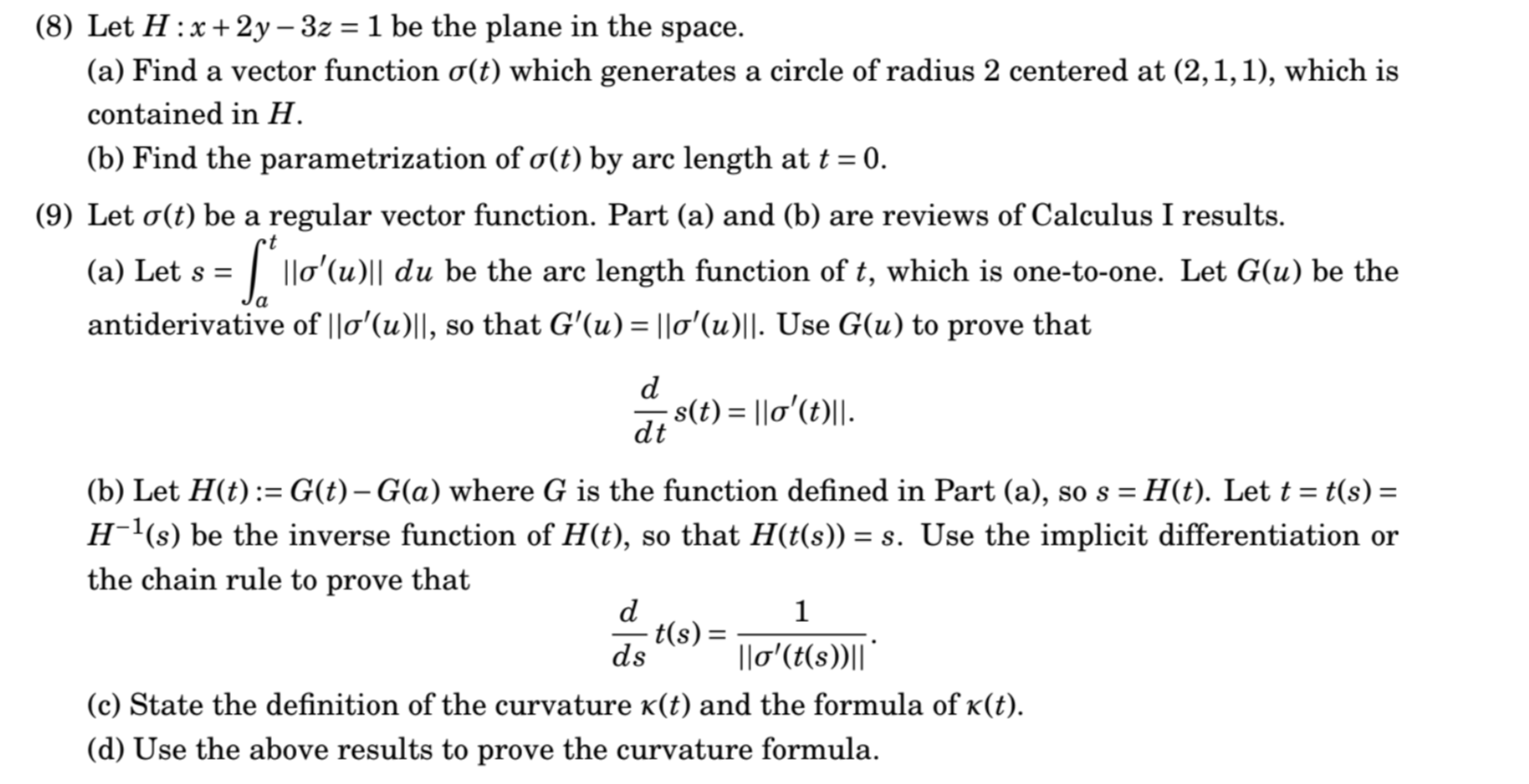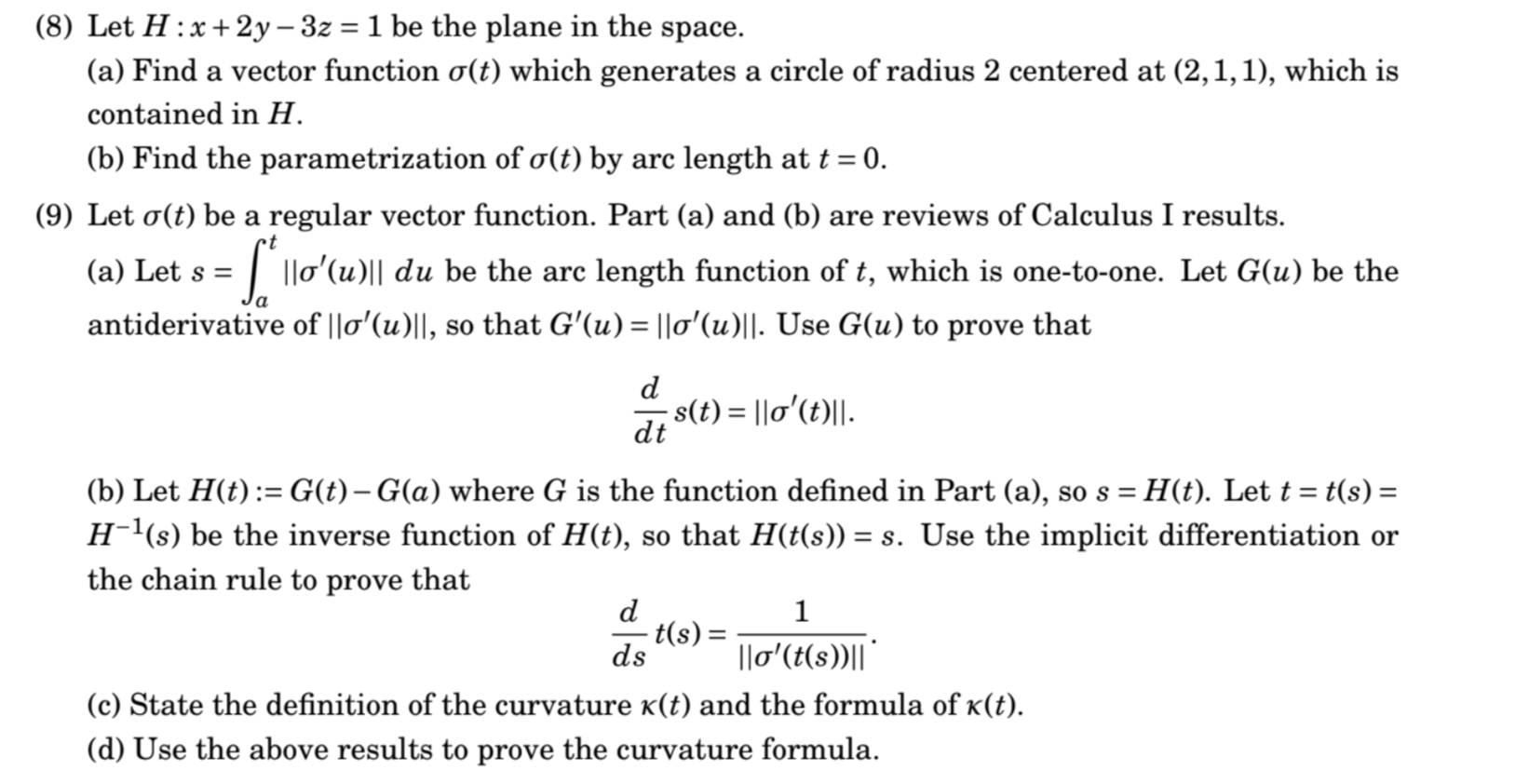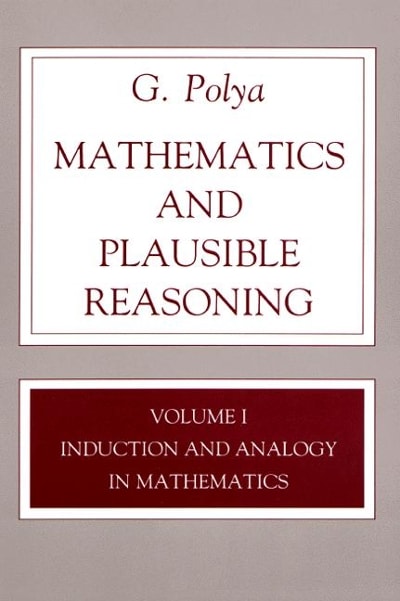Answered step by step
Verified Expert Solution
Question
1 Approved Answer
(1) Find the arc length parametrization for the helix o(t) := (cos(t), sin(t), 2t3/2) at t = 1. (2) Let o(t) be a regular vector




Step by Step Solution
There are 3 Steps involved in it
Step: 1

Get Instant Access to Expert-Tailored Solutions
See step-by-step solutions with expert insights and AI powered tools for academic success
Step: 2

Step: 3

Ace Your Homework with AI
Get the answers you need in no time with our AI-driven, step-by-step assistance
Get Started


